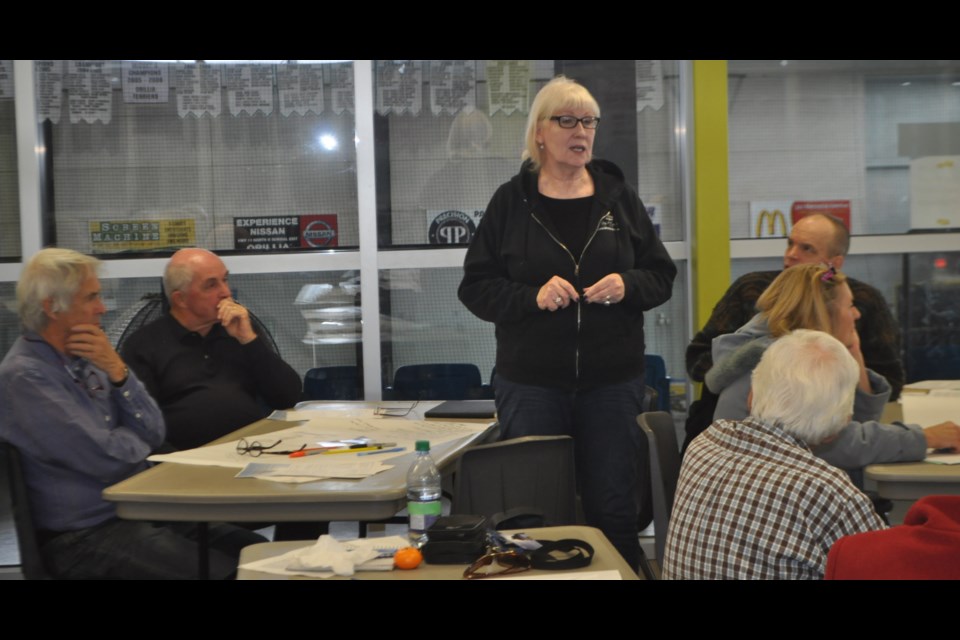Bring back the monument, but with a little bit more historical perspective.
That seemed to be the central theme from Saturday’s final working group session on the future of Orillia’s Champlain Monument.
The final forum, at Rotary Place, attracted about 30 area residents, who were divided into smaller groups to outline what they think the monument’s future should be.
“It accurately shows what people at that time felt,” said city resident Matt Watson. “History doesn’t stop.”
Erin Dixon, who co-moderated the discussion group, said complex conversations like Saturday’s aren’t always black and white.
Long-time Orillia resident Cliff Whitfield said he wants the statue to go back untouched, but noted his group thinks it would be good to have storyboards that provide a deeper understanding of the time.
“I crawled around that thing when I was a kid in the thirties,” Whitfield joked. “We should put the monument back and expand on it.”
The iconic bronze statue was crafted by English sculptor Vernon March and commissioned to mark the 300th anniversary of the French explorer's arrival to the region in 1615. It was erected in Couchiching Beach Park in 1925.
Two years ago, it was removed for restoration by its owner, Parks Canada. However, its departure sparked a fierce debate about, principally, its representation of Indigenous people. As a result, Parks Canada put a halt on its return so that the community could be consulted.
Retired teacher Louise Hoover compared the decision to possibly get rid of the statue with ISIS’s - and before them the Taliban’s- destruction of historical statues and sites across the Middle East.
“This (the Champlain monument) is a work of art and it seems like a lot of censorship,” she said. “This is a bit of censorship like how the Nazis were burning books in 1933.”
The joint working group that met Saturday was struck last year and includes representation from Parks Canada, the City of Orillia, the Chippewas of Rama First Nation, the Huron-Wendat Nation, the Elementary Teachers’ Federation of Ontario and two citizens-at-large.
The group has a mandate to pursue public consultation and report back to city council and Parks Canada on an “appropriate path forward for the Champlain Monument that is respectful and representative of both Indigenous and non-Indigenous perspectives.”
Fellow retired teacher Sue Newman, who also taught in Toronto, agreed that the statue definitely falls into the world of art.
“If this art was to represent historical events does it do that?” she asked. “How have we changed when we look at this monument? Do we still feel the same away about it?
“The monument is a depiction of Champlain at a moment in time. It’s not meant to be negative.”
An online survey on the city’s website is also proving popular with nearly 900 responses recorded so far with the April 30 deadline still a couple of weeks away.
The survey has five questions with the central question being: “What is your preferred option for a path forward for the monument that is respectful and reflective of the area's shared history?”
Mayor Steve Clarke said he’s been enthused by the public’s interest in the monument’s future and noted it’s important that everybody’s thoughts and feelings are taken into account.
“I think it’s a good process if you want to resolve the situation, and it is a situation,” Clarke said. “The goal is to better depict our cultural history.”
